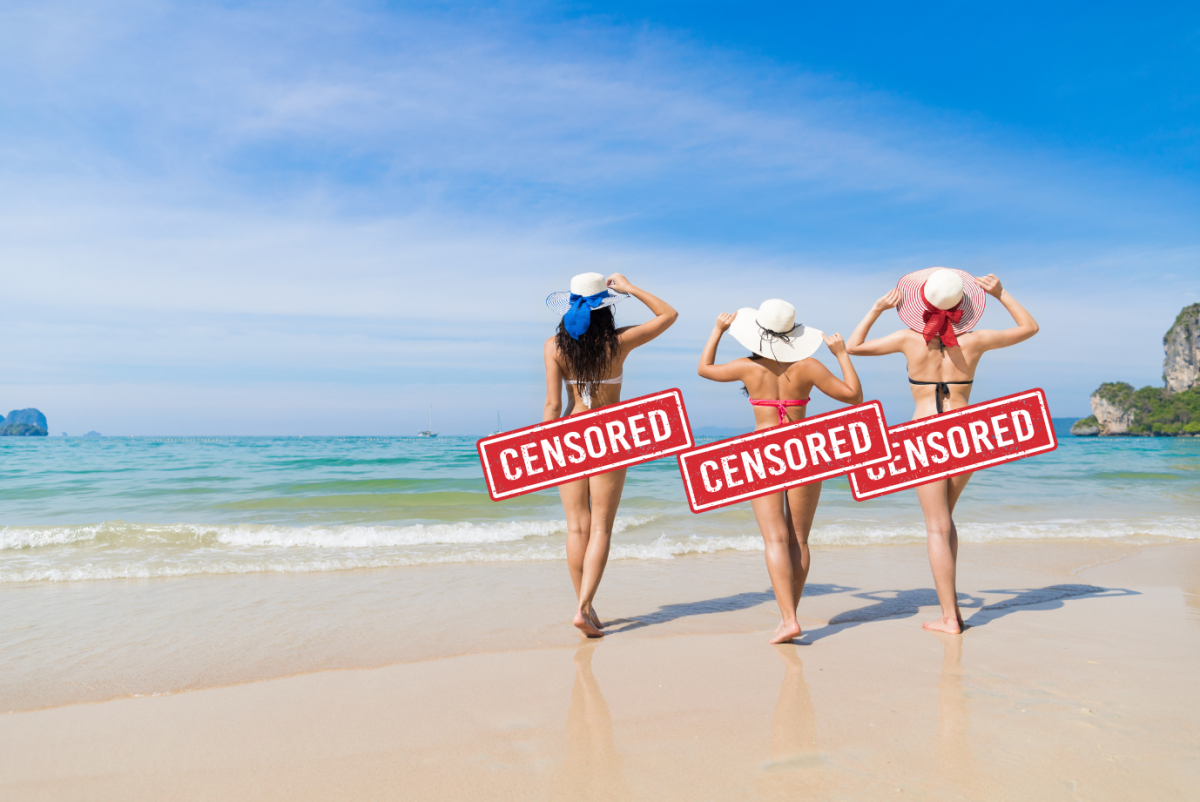
What sort of harm is caused by women wearing clothes that are comfortable to them in public? Photo: Prostick Studio.
I can think of many things to be troubled by in 2024, but women’s bums aren’t one of them.
For one man on the Gold Coast, though, the sight of an almost-bare woman’s bottom is concerning enough to spur him to launch a crusade against women wearing G-string bikini briefs in public, and people are in uproar.
Ian Grace, billed as the ‘founder of a local charity’, wrote to the Gold Coast Mayor expressing his distaste for the clothing choices of young women who had come to not one but TWO of his ‘family events’ in bikini bottoms, exposing too much of their bums for his liking.
Grace’s views are nothing new and seem to be coming from the usual puritanical panic about what he sees as sexualised behaviour.
Speaking to 2GB radio, Grace is quoted as claiming that women’s bottoms, much like their breasts, are inherently erotic, unlike, for example, men in budgie smugglers. Clearly, he hasn’t considered that for some people, almost-naked male bodies are indeed sexual prospects, but that’s what a traditionally heteronormative, misogynistic worldview will do for you.
Grace’s views are ultimately irrelevant (and no bikini ban is forthcoming). But the ferocity of the reaction to his letter – both pro and anti its sentiment – raises the question: why are women’s bodies still subject to social policing in this day and age?
I’ve been wracking my brain trying to understand what sort of harm is caused by women wearing clothes that are comfortable to them in public. My answer remains the same when it comes to G-string bikini briefs as it would be if we were discussing low-cut tops in the workplace or short-shorts at school: any issue with these clothes lies in the eyes and mind of the person taking issue with them, not the wearer.
Grace’s distaste with young women baring their bums is only relevant to him because he is choosing to see them as sexual, and that makes him uncomfortable for reasons that can only be engrained in his personal experience and have nothing to do with the girls in question. No one is forcing him or anyone at his events to stare at anyone’s bodies. The mere existence of women’s bums isn’t going to somehow pollute the minds of the young people present at his charity events. If that’s the concern, he should probably focus his anxiety more on the impact of the internet than a few girls hanging out and enjoying the sunshine.
The fact is, as a society, we code women’s bodies as being sexual objects regardless of what they’re wearing. Whether it’s women on the beach in G-string bikinis, women walking down the street in gym wear, or indeed women wearing clothes deemed to be unfashionable and unflattering – we rank and prioritise women on how sexual (or unattractive), we see them.
I was recently pregnant and, as a result, became the receptacle of everyone’s opinions about pregnant women’s bodies.
One thing I heard a few times was a criticism of pregnant women who wear clothes that expose their belly.
“It’s a bit much,” one person said about another pregnant woman’s penchant for wearing crop tops that stopped well above her seven-month bump. Why was it a bit much? Surely, given how pregnant she was, her body wasn’t too sexual when exposed like that? Was it because she was now not sexual enough to be visibly displaying herself in public? The contradictory nature of the judgment is mind-boggling.
Any woman will tell you there is no neutral state that our bodies can be in where we aren’t likely to cop judgment. We can be too skinny, too fat, too sexy, not sexy enough, too obsessed with our looks, or accused of having ‘let ourselves go’. I’ve seen women cop criticism on the beach for wearing bikinis that are ‘too skimpy’ and then seen Muslim women swimming while wearing burkas criticised for being too covered up. There is simply no way to win.
So to the G-string bikini-wearing young women on the Gold Coast, I say wear your bottoms out with pride if that makes you happy. Unfortunately, you’re likely to shock the Ian Graces of the world, and there is seemingly no way around that – at least you can look and feel good while doing it.












